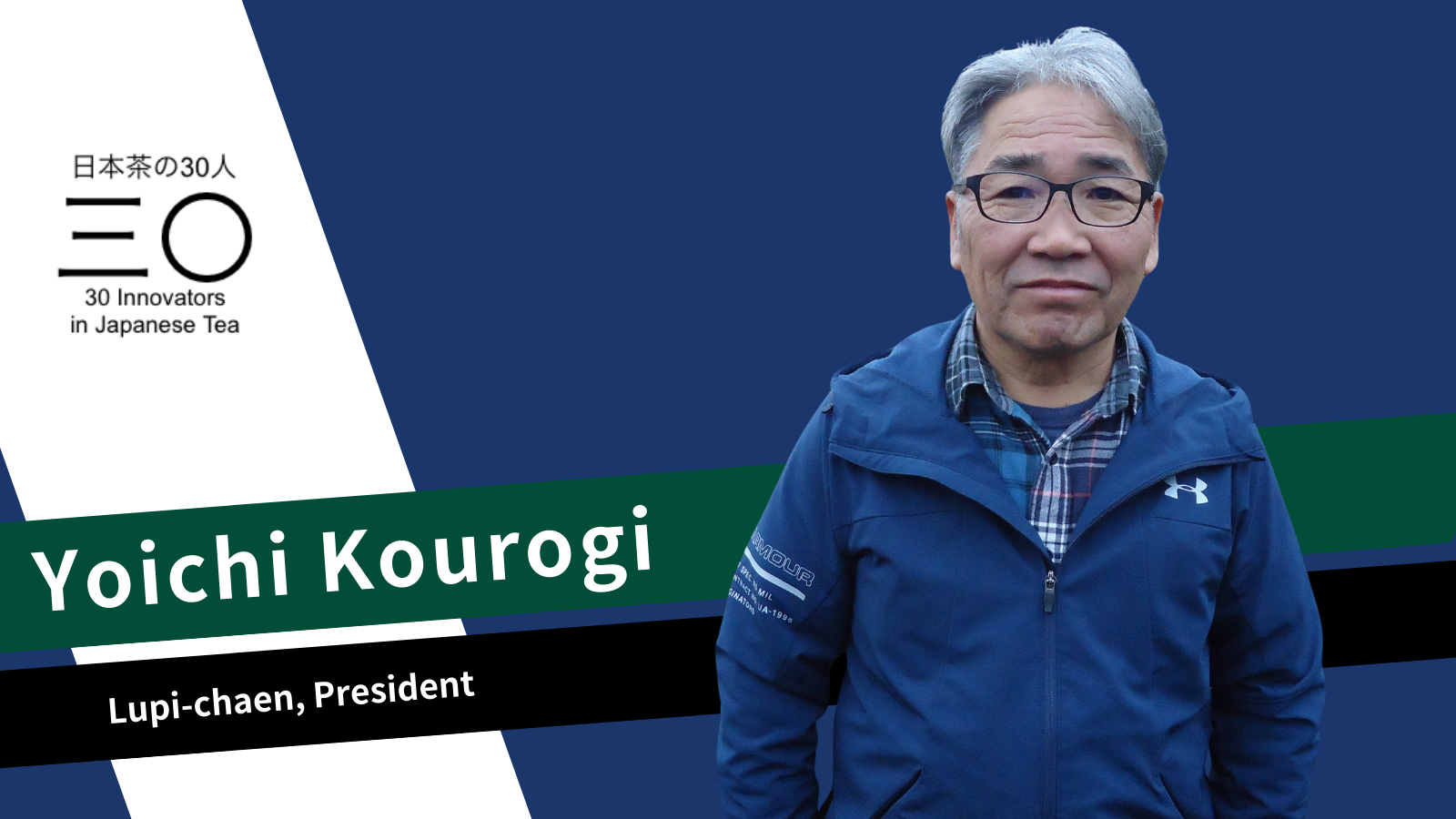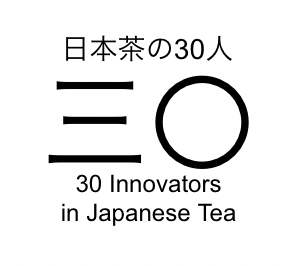The tea plant is a subtropical plant native to Yunnan, China. For this reason, most of the world’s tea-growing regions are located in tropical countries at low latitudes.
When looking at the world tea producing regions, Japan is located at the northern limit of tea production, along with Turkey, Iran, Georgia and others. In fact, tea production in Japan is concentrated in western Japan. While some tea farms are scattered throughout Hiyama Town in Akita Prefecture and Kesennuma City in Iwate Prefecture, the northern limit for commercial tea production is said to be the line between Murakami City in Niigata Prefecture and Daigo Town in Ibaraki Prefecture.
However, there are people who have pushed that northern limit much further and are taking up the challenge of making tea in Niseko Town, Hokkaido Prefecture. That is Lupicia, which operates more than 140 shops nationwide and that moved its headquarters to Niseko Town in 2020. The group is led by Youichi Kourogi, a master tea maker who has produced tea for more than 40 years in Gokase Town, Miyazaki Prefecture, where the southernmost ski resort in Japan is located.
The Northern Limit Tea Project started in 2015. In 2022, 7,000 tea plants that were over 40 years old were transplanted from Shizuoka. The company continues to take on the challenge of producing the Northern Limit Tea on an unprecedented scale.
This time, we spoke to Youichi Kouroki, the founder of the Northern Limit Tea Project.
Youichi Kouroki
Youichi Kouroki was born in 1962. In 1987, he became a second generation farmer and started his career in the tea business. In 1995 Kouroki-san started full-fledged tea business management as a tea farmer at Gokase Midori Seicha. In 2015, he started planting tea plants in Niseko Town, Hokkaido with Lupicia Corporation. In 2020, Kouroki-san established Shinyukigaya Chaen (Niseko Tea Farm) and started the Lupicia Northern Limit Tea Project. In 2023, the company name was changed to Midoribeki Chaen (Lupi Tea Garden, a Lupicia Group company), where he currently serves as the company’s president. Kouroki-san has won the Minister of Agriculture, Forestry and Fisheries Award 17 times in the pan-fired tamaryokucha category. He has also received numerous other awards in Japan and abroad, including the Nihoncha Award, Japan Tea Selection Paris, and the Leafies International Tea Award.
Awards won by the Gokase Midori Seicha:
The Minister of Agriculture, Forestry and Fisheries Award
A total of 17 times in the pan-fired tamaryokucha category (at the national, Kyushu, and prefectural competitions).
Nihoncha Award
2019 Winner of the Jury Encouragement Award for the withered kamairicha in the kamairicha category.
2021 Winner for the Fine Product Award for the roasted kamairicha in the kamairicha category.
Japanese Tea Selection Paris
2021 Gold Award winner for the withered kamairicha in the kamairicha category
2022 Grand Prix winner for the black tea in the others category
2022 Bronze Award winner for the roasted kamairicha in the kamairicha category
The Leafies International Tea Award
2022 Gold Award winner for the black tea
Contents
It all started with the idea of planting tea in the ski resort of Niseko!
Q: Please tell us about the Northern Limit Tea Project.
Kouroki: We started this initiative in June 2015, but it all began when I originally met the chairman of the Lupicia Group, Mizuguchi-san, at an event around 2013.
At that time, I was working in the tea industry during the summer and at a ski resort during the winter. One winter, while I was at a resort in Niseko, I saw a camellia tree there and thought ”Tea is also a member of the camellia family, so maybe it can grow in Hokkaido, too? Let’s plant one!”.
When I talked to the president about this at an event, he said he would support me because he likes challenges and interesting things. This was the beginning of the Northern Limit Tea Project, which aims to reach the northern limit of outdoor tea cultivation.
The first year (2015), we planted 42 seedlings, but they were flattened by the heavy snowfall. Only 17 plants survived the winter and remained until the next year.
The seedlings we planted at that time were truly diverse; some were 1 year old, some were 2 years old. We even brought seedlings that were growing in the mountains and tried planting them. There was an experimental flavor to it, and we were just going with the flow, so to speak.
Among them was a mature plant of Kaori Sayama cultivar, that is resistant to snow. It was a hardy 30 year old plant with strong roots, so it was able to survive the winter safely.
Using these results as a cue, we planted 600 Sayama Kaori plants in June 2021. The following year, in May 2022, together with participants gathered from the general public we planted approximately 7,000 tea plants, acquired from an abandoned tea garden of a Shizuoka tea farmer. At that time, we planted 7,000 tea plants over 40 years old in Niseko’s tea garden. So far, about 20~30% of them have survived.
Q: How did you feel when you harvested tea for the first time?
Kouroki: It was five years later, in 2020, that we were finally able to harvest the tea planted in 2015.
When I steamed the tea leaves for the first time, smelled the aroma, and tried drinking it, I was convinced that this was good. It had a taste and aroma like no other, like a mixture of spring and autumn, and I remember feeling that the vitality of Hokkaido lands was alive in the tea.
Global warming is not a tailwind. Beyond the hardships of the past, beyond the northern limit, making tea that can only be produced in Hokkaido.
Q: The Northern Limit Tea Project involves cultivating tea further north than the Tohoku region, which is said to be the northern limit for outdoor tea cultivation. I am sure there have been many hardships up to now.
Koukoki: We have gone through a lot of trial and error. In addition to failures due to the cold, there were also cases of abnormal weather that resulted in a large number of insects and too many flowers.
People sometimes say, “If it gets warmer due to global warming, it will be easier to grow tea in Hokkaido”, but I think that would make the tea boring. I feel that to be able to make unique and interesting teas that can only be made here, it is inevitable that there will be some hardships.
There have been many difficulties, but the fact that I planted tea here has also been a great personal challenge. I think it was right to face this challenge.
When it comes to tea made in Japan, in this day and age, there is no longer a framework that says, “It has to be this kind of tea”.
Each producer expresses themselves through the tea they make, and a diversity of tea is being produced. In that sense, if tea production in Hokkaido, including Niseko, is possible, I feel that something very bright will emerge in the next 5 or 10 years.
Q: What is the most appealing aspect of this business?
Kouroki: Many people who were born and raised in Hokkaido, and many Hokkaido children, have never seen tea plants, and picked tea for the first time. The appeal is being able to convey the existence of tea to such people.
Q: What kind of role does Japanese tea have in your eyes?
Kouroki: It is something I have been working on for a long time, so I guess I myself have turned into it. The beauty of Japanese tea, the fresh green aroma and taste, is still a delicacy that only Japanese people can express. While creating new teas, I would like to convey the original charm of Japanese tea.
Q: Do you have any benchmarks or competitors?
Kouroki: Is it about the tea masters who are working together on various initiatives? Seeing people who love tea and want to expand the use of tea makes me think that I must do my best as well.
My job is to communicate. Boosting the tea industry from the northern limit.
Q: Please tell us about your vision of the future.
Kouroki: Along with tea production, I believe that communication is also part of the job. I would like to challenge the people around me to take part in activities showing them that tea can be grown beyond the conventional northern limit. I would like to enliven the tea industry by getting people who are not yet aware of the appeal of tea interested in it.
Q: Have you set any specific goals for the Northern Limit Tea Project?
Kouroki: I do not have any specific goals at this point. In the future it would be great if it became a beautiful tea farm and we were able to produce a good amount of tea using factory machines.
Now, I have tea fields in Gokase and Niseko, and I have been allowed to make them into one company and work on the Northern Limits Tea Project. As a farmer, I believe that this is also an accomplishment. But more than anything, I think that the success of this project is due to the great support of Lupicia, the world’s leading tea specialty shop.
It was my passion for tea production and the passion of the entire company – Lupicia, that took on the great challenge of moving its headquarters from Tokyo to Hokkaido. I believe that the fact that I was able to take on this challenge (that I could not have taken on alone) in collaboration with a like-minded company, will lead to a new kind of agricultural management at a time when tea farm management has become difficult.
I hope to contribute to the diversification of Japanese tea by making various types of tea, such as black tea and oolong tea, here in Niseko. I would like to pass on this challenge and new style of tea to the next generation.
Kouroki: Recently, we have begun teaming up with a specialist who is familiar with soil and other aspects of our business.
Up until now, we have been relying on our own experience. There were some parts that we were doing haphazardly, and were unable to verify most of the experiments. If the two things: what we do with our senses and what experts do theoretically, are planted and grown in the same place, wouldn’t that be interesting?
I am still in the process of taking on the challenge, and I am really looking forward to the future.
Q: What do you expect from the tea industry in the future?
I think we need to firmly promote the diversity of Japanese tea to the world. We live in an era where producers are stepping forward, so I think each should express the appeal of their own tea and convey it to consumers. If we can do that, the future of the tea industry definitely will not be bleak.
There are many producers in Japan with unique strengths. I look forward to seeing the continued success of these people who will support Japanese tea in the future.
*All photos by Ryokuheki Chaen


